Lexden and Winstree, Essex
Up to 1834
A parliamentary report of 1777 recorded parish workhouses in operation at Aberton (for up 16 inmates), Aldham (20), Great and Little Birch (24), Boxstead [Boxted] (30), Bures (9), Copford (30), Dedham (48), Fordham (22), Great Horkesley (26), Langham (25), Layer de la Hay (15), Marney (25), West Mersea (18), Stanway (18), Great Tey (28), Great Wigborough (20), and Wivenhoe (30).
Boxted's parish workhouse was a cottage at the east side of what is still called Workhouse Hill.
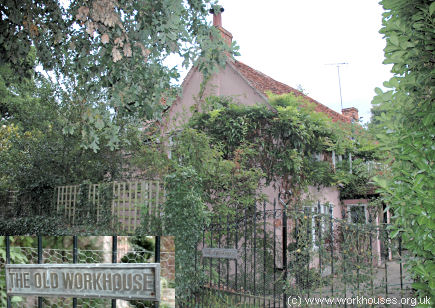
Boxted former parish workhouse, 2006.
© Peter Higginbotham.
The Dedham parish workhouse operated between 1725 and 1835 in a converted L-shaped building on Crown Street. An adjacent house is thought to have been the workhouse master's house. In 1775, the master received one shilling per week to feed and clothe each inmate. An inventory taken in the same year included a workroom containing twenty spinning-wheels and four looms.
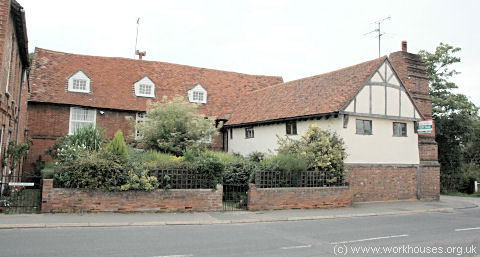
Dedham former parish workhouse, 2006.
© Peter Higginbotham.
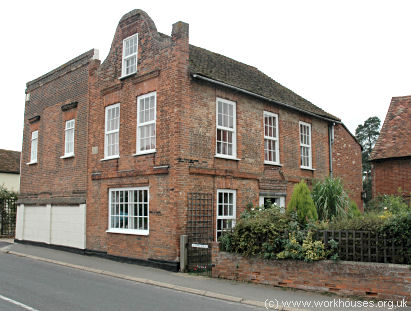
Dedham former workhouse master's house, 2006.
© Peter Higginbotham.
A cottage on School Road in Langham, now known as Keeper's Cottage, was used as the parish's workhouse prior to 1835. By 1813, only 13 inmates were in residence.
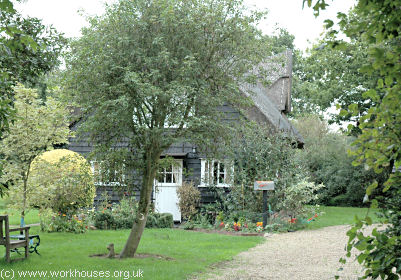
Langham former parish workhouse, 2006.
© Peter Higginbotham.
Little Horkesley's parish workhouse was in an isolated location at the north side of what is still called Workhouse Lane, about a mile to the south of the village.
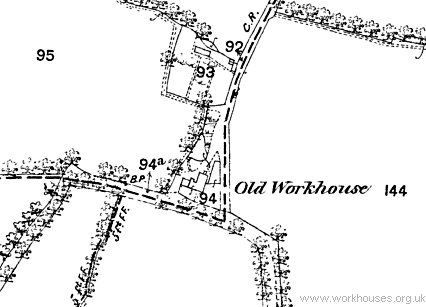
Little Horkesley former workhouse site, 1876.
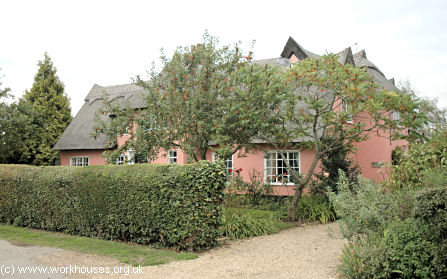
Little Horkesley former parish workhouse, 2006.
© Peter Higginbotham.
In 1726, a cottage at the east side of the Colchester Road was converted to become Wivenhoe's parish workhouse.
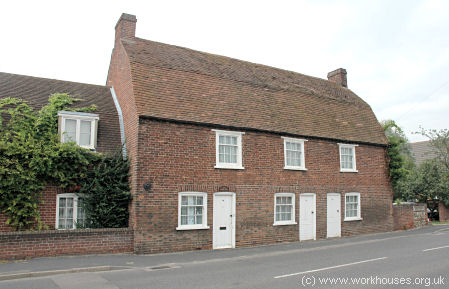
Wivenhoe former parish workhouse, 2006.
© Peter Higginbotham.
Wormingford's parish workhouse was a house at the south side of Bures Road.
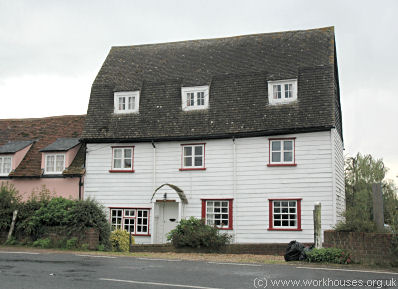
Wormingford former parish workhouse, 2006.
© Peter Higginbotham.
After 1834
The Lexden and Winstree Poor Law Union was formed on 1st February 1836. Its operation was overseen by an elected Board of Guardians, 38 in number, representing its 35 constituent parishes as listed below (figures in brackets indicate numbers of Guardians if more than one):
County of Essex: Abberton, Aldham, West Bergholt, Birch, Boxted, Brightlingsea (2), Mount Bures, Chappel, Copford, Dedham (2), East Donyland, Easthorpe, Fingringhoe, Fordham, Great Harksley [Horkesley], Little Horksley [Horkesley], Langenhoe, Langham, Layer-de-la-Hay, Layer Breton, Layer Marney, Mark's Tey, East Mersea, West Mersea, Peldon, Salcott [Salcot], Stanway, Great Tey, Little Tey, Virley, Wakes Colne, Great Wigborough, Little Wigborough, Wivenhoe (2), Wormingford.
The population falling within the union at the 1831 census had been 19,811 — with parishes ranging in size from Mount Bures (population 262) to Brightlingsea (1,784). The average annual poor-rate expenditure for the period 1833-35 had been £16,889 or 17s.1d. per head of the population.
Initially, the new Lexden and Winstree Union retained parish workhouse premises at Dedham, Langham, Copford and Wivenhoe, until a new central union workhouse could be erected.
The new workhouse was built in 1836 at the south side of the London Road in Stanway. The building, which was designed by SO Foden and Henman, cost £6,800 to construct and could accommodate 330 inmates. Its layout was an unusual variation on the popular cruciform plan. Instead of the more common cross-inside-a-square or Y-inside-a-hexagon layouts, it comprised a cross-inside-an-octagon plan. This layout was also employed by William Thorold for the Norfolk workhouses at Depwade and Walsingham. However, the administration block at Lexden and Winstree was located between two of the radial wings, rather than being at the end of one. This feature was occasionally found elsewhere, for example in the Thingoe and Romford Union workhouses. The workhouse location and layout are shown below on the 1896 map below.
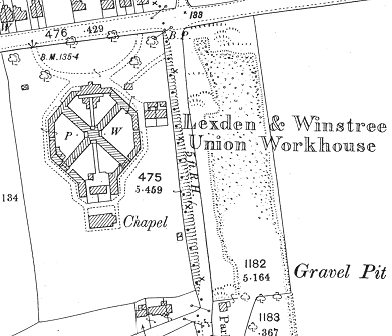
Lexden & Winstree workhouse site, 1896.
The entrance and administration block was located at the north of the site and would have contained a porter's room, waiting room and search room on the ground floor, with the board-room and clerk's office on the first floor. A passageway led to the hub where the Master's quarters were located.
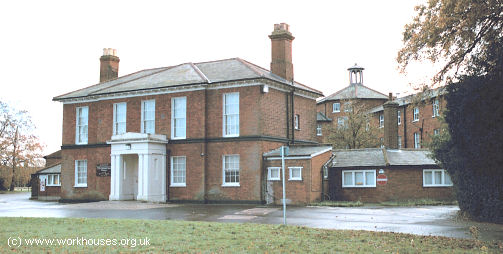
Lexden and Winstree workhouse administration block from the north-west, 2000.
© Peter Higginbotham.
The four main accommodation blocks radiated from the central hub with women's accommodation thought to have been at the west and men's at the east. Single storey outbuildings formed the octagonal perimeter to the workhouse.
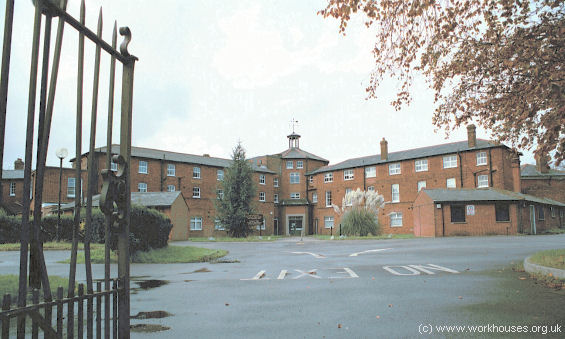
Lexden and Winstree workhouse from the east, 2000.
© Peter Higginbotham.
A two-storey infirmary (later known as Rose House) was located at the southern side of the main building. It was probably erected in several stages, beginning around 1850.
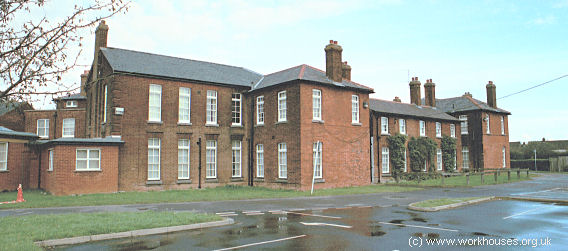
Lexden and Winstree workhouse infirmary block from the south-west, 2000.
© Peter Higginbotham.
A laundry was located at the south-west side of the main buildings.
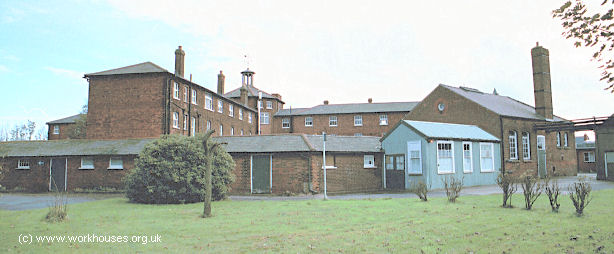
Lexden and Winstree workhouse from the north-west with laundry at right, 2000.
© Peter Higginbotham.
A chapel, probably dating from the 1880s, was added at the south of the site.
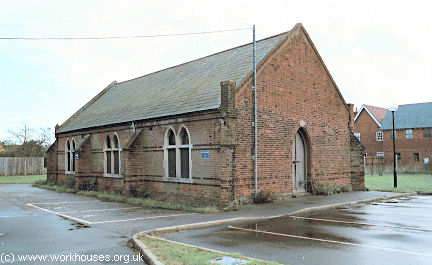
Lexden and Winstree workhouse chapel from the north-west, 2000.
© Peter Higginbotham.
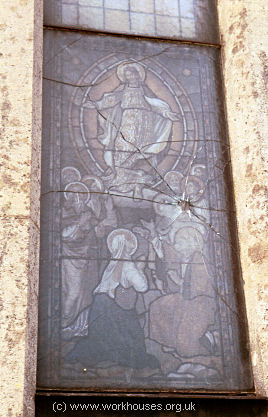
Lexden and Winstree workhouse chapel window, 2000.
© Peter Higginbotham.
A mortuary, probably dating from the early twentieth century, stood at the east of the site.
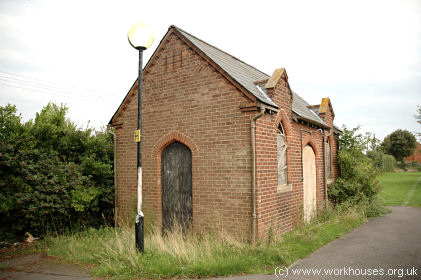
Lexden and Winstree workhouse mortuary from the north-west, 2000.
© Peter Higginbotham.
Taken in 1929, here is a group photograph of the Board of Guardians, not long before the union was wound up.
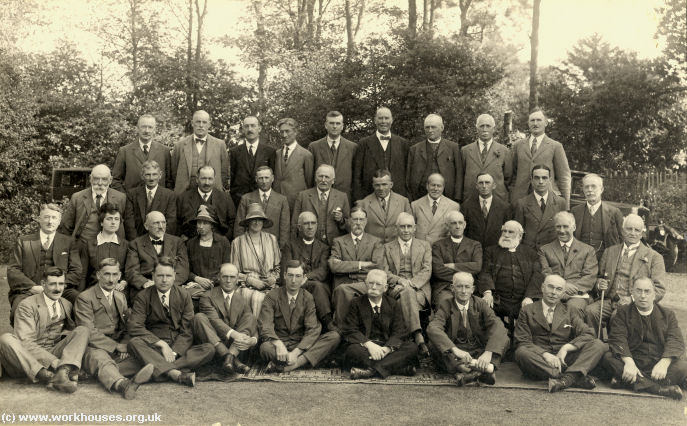
Lexden and Winstree workhouse Board of Guardians, 1929.
© Peter Higginbotham.
The workhouse later became St Albright's Hospital but after its closure parts of the building were used as office accommodation by the local authority until 2005. The site was subsequently converted to residential use, retaining the main building, infirmary and chapel.
Children's Home
The union operated a children's home at Stanway Villa, which was located at the west side of Villa Road, Stanway. The building no longer exists.
Staff
Inmates
Records
Note: many repositories impose a closure period of up to 100 years for records identifying individuals. Before travelling a long distance, always check that the records you want to consult will be available.
- Essex Record Office, Wharf Road Chelmsford CM2 6YT. Relatively few records survive. Holdings include: Guardians' minutes (1836-1930); Ledgers (1836-1930); Master's report book (1863-70); etc.
Bibliography
- Edwards, Cristina (2010) Lexden and Winstree Union Workhouse 44 pages, illustrated. Copies available at £5 (cheques payable to Belhus Books) from the author at 1 Guide Post Cottages, Warren Lane, Stanway CO3 0LL. Tel. 01206-330474.
- Drury, John (2006) The Workhouses of Essex (Farthings Publications, Felsted)
Links
Thanks
- Thanks to Liv Shand for very kindly donating the picture of the Lexden Guardians.
Unless otherwise indicated, this page () is copyright Peter Higginbotham. Contents may not be reproduced without permission.


